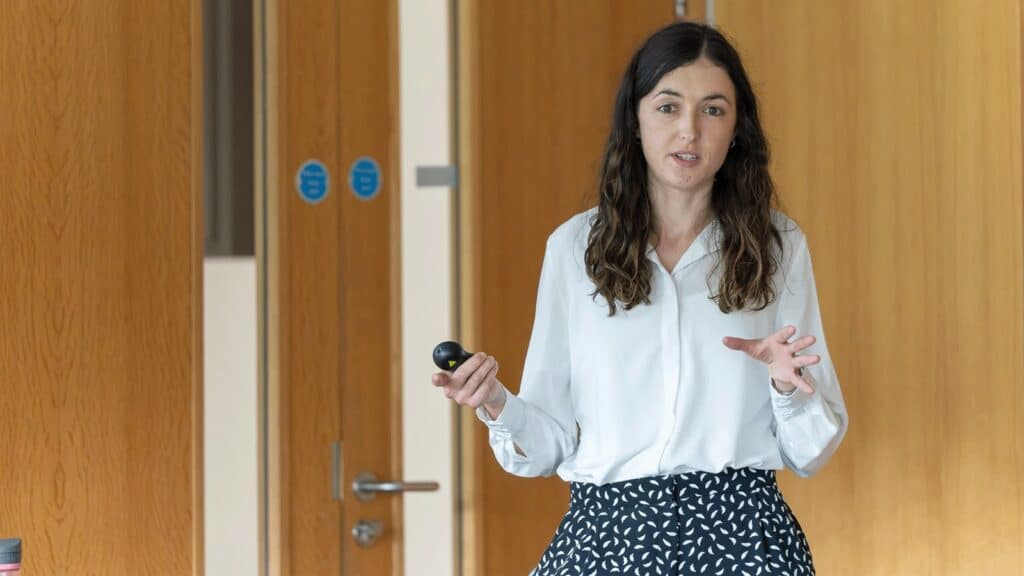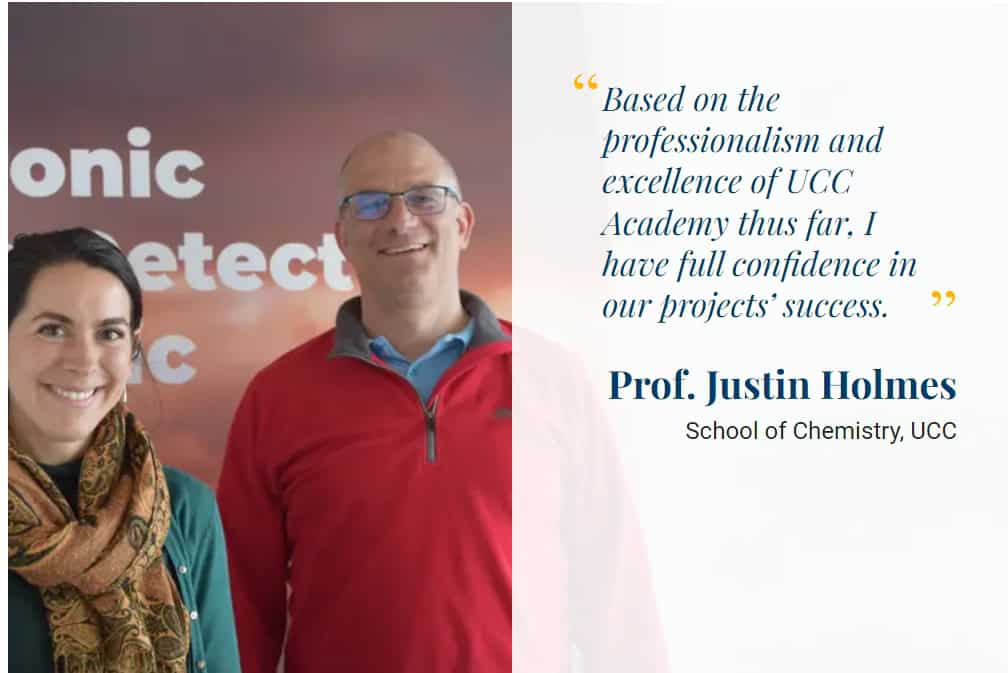Starting a new EU-funded research project? Interim Programme Manager and former TRANSLATE Project Manager Rebecca Buckley shared tips for managing a research consortium post-award at a recent UCC Research Skills Training Programme webinar.
Once your EU-funded project is awarded (read ‘Expert tips on building research consortium‘), the real work begins—managing the consortium. Ensuring smooth collaboration across partners, meeting milestones, and maintaining compliance with funder requirements are just some of the challenges that arise post-award. Rebecca Buckley of UCC Academy, with her extensive experience in managing EU projects including TRANSLATE, offers invaluable insights into effective consortium management.
Establish governance structures early
One of the most critical first steps in managing a research consortium is setting up a clear governance structure from the outset. As Rebecca explains, the success of a large, multi-partner project often hinges on a well-defined governance framework. This structure, typically outlined in the consortium agreement (using the DESCA model for instance), should detail the roles and responsibilities of each partner, how decisions will be made, and who will be accountable for key aspects of the project.
For complex projects, consider using a RASCI table to clearly outline who is ‘Responsible, Accountable, Supporting, Consulted, and Informed’ for each task. This ensures that everyone understands their role, minimising confusion and overlap.

Create a project handbook
While the grant and consortium agreements are vital documents, they can be dense and difficult to navigate, especially for new members. A project handbook is a more accessible, practical guide that summarises the day-to-day management of the project. It can include essential information such as:
– Roles and responsibilities
– Project objectives and deliverables
– Meeting schedules and communication protocols
– Key contacts and resources
The project handbook helps align all partners early on and sets clear expectations. Even if it’s not a formal deliverable for your project, it’s a useful tool to create regardless, ensuring that all partners are on the same page.
Foster regular communication

Effective communication is the backbone of any successful consortium. Establishing regular meetings—both virtual and in-person—is essential for keeping the project on track. As Rebecca advises, getting a consistent meeting schedule in place from the start ensures that all partners remain engaged and aligned with project milestones.
For long-term projects, annual in-person meetings can be particularly beneficial for relationship-building. While virtual meetings are convenient for day-to-day updates, face-to-face interactions foster a sense of collaboration and trust among partners. These meetings can also be used to tackle more significant project milestones or address challenges in a collaborative environment.
In addition to regular meetings, use collaboration platforms like Microsoft SharePoint to store project documents and facilitate communication. Keeping a centralised record of who is affiliated with the project, especially for EU reporting requirements, will streamline the reporting process when the time comes.
Stay on top of reporting and risk management
Managing a large research project means staying vigilant about reporting requirements. For EU projects, both technical and financial reports are usually due every 12–18 months. Regular internal reports can help avoid any omissions in these EU reports and ensure that all partners are aware of progress and potential risks, and allow the consortium to address any issues early on.
It’s also crucial to maintain a risk register, which tracks potential risks and outlines mitigation strategies. By regularly updating this register, you can prevent small issues from becoming larger problems. A proactive approach to risk management demonstrates to funders that you are effectively monitoring and controlling project risks, which is key to ensuring the long-term success of the project.
Balance openness with Intellectual Property (IP) considerations
When managing data and intellectual property in an EU project, it’s essential to strike a balance between “as open as possible and as closed as necessary”. EU-funded projects typically encourage Open Access to research data, but some sensitive information may need to remain closed until decisions around IP protection or commercialisation are made.
To manage this balance, put a data management plan in place early on and ensure that all partners are aware of what can be shared and what must be protected. Tools like Zenodo, an open-access repository, can help maintain records of all project outputs, including presentations, posters and datasets, thus simplifying reporting.
Explore TRANSLATE Zenodo and RADICAL Zenodo.
Leverage administrative support

Finally, managing the administrative workload of a research project can be overwhelming. From managing finances and reporting to dealing with communication from funders, the day-to-day tasks can take a toll on researchers. Rebecca emphasised the importance of having a dedicated project management team in place. At UCC Academy, this type of support has proven invaluable in reducing the administrative burden on researchers, allowing them to focus on the scientific and technical aspects of the project.
By leveraging administrative support from experienced project managers, you can ensure that reporting requirements are met on time, finances are monitored, and all documentation is properly maintained.
Rebecca Buckley’s insights highlight that the key to successful consortium management lies in preparation, proactive engagement, and effective communication—all of which are transferable across various types of research funding.
Learn more about UCC Academy’s services in research management here.


